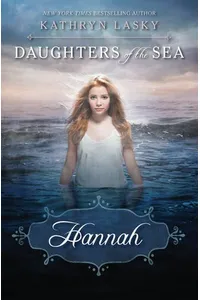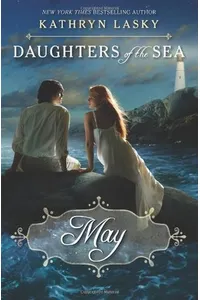Dive into the shimmering world of Kathryn Lasky’s Daughters of the Sea, where mermaids, mystery, and 19th-century America weave a spellbinding tale! This young adult series blends historical fiction with fantasy, following three sisters separated at birth, each discovering their secret mermaid heritage. With rich characters and a touch of magic, it’s a journey of self-discovery that captivates readers.
From Boston’s bustling households to Maine’s rugged cliffs, the series pulls you into a world where the ocean’s call is irresistible. Whether you’re a fan of historical drama or crave a sprinkle of the supernatural, Daughters of the Sea offers a unique adventure that’s hard to resist.
How Daughters of the Sea Began
Kathryn Lasky, a Newbery Honor-winning author known for Guardians of Ga’Hoole, crafted Daughters of the Sea to explore identity through a fantastical lens. Inspired by her love for historical settings and myths, Lasky envisioned a quartet about mermaid sisters navigating human society. Launched in 2009, the series reflects her knack for blending meticulous research with imaginative storytelling, creating a vivid belle époque backdrop.
Lasky’s own words reveal her creative spark: she aimed to “slip out of human skin” to inhabit the lives of characters who are “not quite human,” merging the mundane with the magical. This vision shaped a series that’s as much about personal freedom as it is about mermaid lore.
The Heart of Daughters of the Sea
The series spans four books, each focusing on a sister’s journey. Hannah (2009) introduces Hannah Albury, a 15-year-old orphan turned scullery maid in Boston, who uncovers her mermaid roots amid a wealthy family’s secrets and a painter’s cryptic hints. May (2011) follows May, a lighthouse keeper’s daughter in Maine, whose longing for the sea leads to a transformative discovery and a sweet romance with a Harvard student. Lucy (2012) tracks Lucy, adopted by a minister, as she defies her social-climbing mother to embrace her ocean destiny in Bar Harbor. The Crossing (2015) ties their stories together, exploring their shared heritage.
Themes of identity, belonging, and freedom pulse through the series. Set against the rigid social structures of the late 19th century, the sisters’ mermaid identities symbolize their struggle for autonomy, especially as women in a patriarchal era. Lasky’s descriptive prose brings the era to life, from salty ocean breezes to creaky Victorian manors, while the fantasy elements—iridescent scales, ocean calls—add a dreamy allure. The series balances historical accuracy with paranormal romance, appealing to readers who love both Downton Abbey and mermaid myths.
Each book stands alone but interweaves, with overlapping timelines that reward careful readers. The sisters’ diverse backgrounds—orphan, islander, adoptee—highlight America’s social spectrum, making their shared journey universally relatable yet distinctly personal.
Why Daughters of the Sea Resonates
Daughters of the Sea has carved a niche in young adult literature, blending historical fiction with fantasy in a way that feels fresh even years after its debut. Fans praise its strong female leads and evocative settings, with reviews noting its ability to “pull readers into the heart of Boston” or make Maine’s coast “come alive.” The series’ focus on women’s empowerment resonates, using the mermaid metaphor to explore self-acceptance and defiance of societal norms.
Though not as widely known as Lasky’s Guardians of Ga’Hoole, the series has a loyal following, with readers cherishing its emotional depth and historical richness. Its impact lies in its quiet power, inspiring readers to embrace their true selves, much like Hannah, May, and Lucy do.
- Number of Books: 4
- Publication Years: 2009–2015
- Target Audience: Ages 12 and up
- Genres: Historical Fiction, Fantasy, Young Adult, Paranormal Romance
Ready to explore a world where the sea whispers secrets? Grab Hannah and plunge into Daughters of the Sea’s enchanting blend of history and magic!

